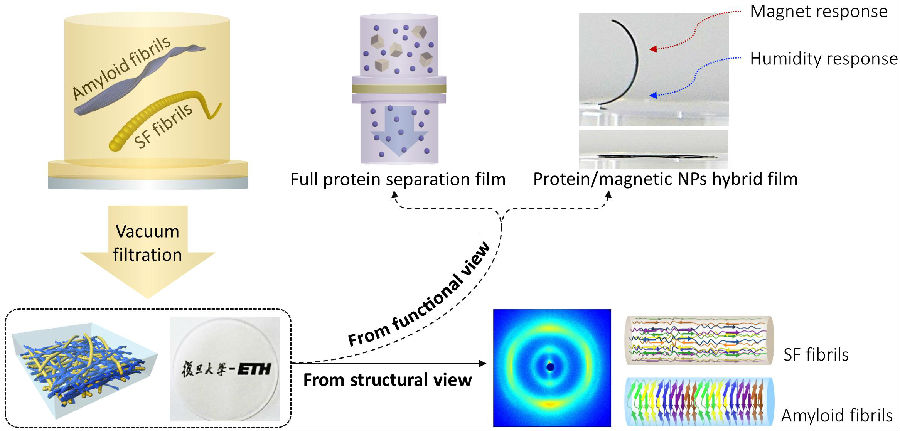 +565 975 658
+565 975 658
 info@premiumcoding.com
info@premiumcoding.com
 Monday - Friday, 8.00 - 20.00
Monday - Friday, 8.00 - 20.00
Professor Xin Chen, Professor Zhengzhong Shao and their research team in Fudan University published a new paper entitled “Modulating Materials by Orthogonally Oriented β-Strands: Composites of Amyloid and Silk Fibroin Fibrils” in Advanced Materials on 9 July 2014. This is a cooperative research work with Professor Raffaele Mezzenga in ETH Zurich when Dr. Shengjie Ling in Fudan University (first author) worked in ETH Zurich sponsored by the China Scholarship Council
In nature, protein assemblies with different secondary structures are frequently found together to synergistically fulfil specific tasks and functionalities. Amyloid fibrils and silk fibroin fibrils are proteinaceous aggregates occurring either naturally or as artificially reconstituted fibrous systems, in which the constituent β-strands are aligned either orthogonal or parallel to the fibril main axis, conferring complementary physical properties. Here they present how the combination of these two classes of protein fibrils with orthogonally oriented β-strands results in composite materials with controllable physical properties at the molecular, mesoscopic and continuum length scales. Furthermore, by either adding magnetic nanoparticles or enzymatically removing one of the two constituents, they show how the amyloid-silk hybrids can be used as sensors, magnetic actuators or separation membranes with tuneable cut-off, which may serve in applications as diverse as molecular filters, microfluidics devices, magnetic valves or artificial skin.

The processing and function of modulating silk fibroin/amyloid fibrils material
Get to know us better now!

Wechat:FDUMMers
Search!
Search across our website
Revenant @ 2018 by fudan | All Rights Reserved
Powered by Weicheng

